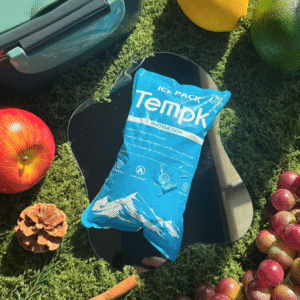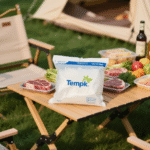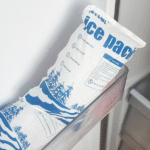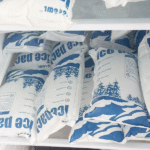How to Master Healthcare Cold Chain Logistics in 2025?
Maintaining the integrity of temperature sensitive medicines and vaccines is more than a logistical challenge – it is a mission that directly impacts public health. Di dalam 2025 the healthcare cold chain will be worth billions of dollars and involves strict temperature ranges such as 2 °C to 8 °C for refrigerated products Dan −90 °C to −60 °C for ultra cold biologics. You’re about to discover how to navigate this complex field with confidence. This article answers the most common questions about managing a modern healthcare cold chain, highlights emerging trends like IoT sensors and blockchain, and provides practical tips you can implement today.
Apa logistik rantai dingin layanan kesehatan Dan mengapa itu penting? Gain an easy to understand explanation of the systems that keep medicines safe.
Which market forces shape the industry in 2025? Learn about global market growth, from biopharmaceutical demand to vaccine programmes, and how they affect your operations.
What challenges do companies face and how can they overcome them? Explore real world obstacles like temperature excursions, traceability gaps and high costs along with proven solutions.
Which innovations are transforming the cold chain? Discover how smart sensors, Ai, blockchain and sustainable packaging improve efficiency and compliance.
Bagaimana peraturan dan praktik terbaik menjamin kualitas? Understand Good Distribution Practice (PDB), IATA CEIV and CDC guidelines in simple terms.
What trends will define the future of healthcare cold chain logistics? Stay ahead with insights into biologics growth, modular storage and digital transformation.
What Is Healthcare Cold Chain Logistics and Why Does It Matter?
Healthcare cold chain logistics refers to the end to end management of temperature sensitive medical products like vaccines, biologics and clinical trial samples. The “cold” part isn’t just about being cold – it’s about maintaining a specific temperature range from manufacturing to administration. For most vaccines and biologics that means keeping them between 2 °C dan 8°C, while some cutting edge therapies require ultra cold storage at −60 °C or below. When the temperature drifts outside that range, delicate molecules degrade quickly, which not only wastes money but can jeopardise patient safety.
Why Cold Chain Is Crucial for Patient Safety
Without a robust cold chain, medications lose potency or become unsafe. Menurut Organisasi Kesehatan Dunia, dengan kasar 50 % of vaccines are wasted globally because of exposure to temperatures outside their recommended ranges. Many biologics and advanced therapies are even more fragile. Biopharmaceutical companies invest billions in research and production, and a single temperature excursion can result in a batch being destroyed. Maintaining the cold chain preserves product quality, protects patients and ensures regulators and payers trust your supply chain.
Essential Components of a Healthcare Cold Chain
| Komponen | Peran | Manfaat bagi Anda |
| Penyimpanan | Refrigerators, freezers and ultra cold units maintain precise temperatures. | Ensures vaccines, biologics and samples remain viable from manufacturing to administration. |
| Kemasan | Pengirim terisolasi, phase change materials and refrigerants protect products in transit. | Prevents thermal shock during transport; helps you comply with strict temperature ranges. |
| Pemantauan | Data loggers and IoT sensors provide real time temperature data. | Enables rapid response to deviations and helps reduce product loss. |
| Mengangkut | Temperature controlled trucks, aircraft containers and drones carry goods safely. | Maintains product integrity over long distances; critical for global vaccine distribution. |
| Kepatuhan | Praktek Distribusi yang Baik (PDB), CDC guidelines and local regulations govern operations. | Keeps your organisation aligned with legal requirements and builds trust with partners. |
Practical Tips for Keeping Products Safe
Start with temperature mapping: Before storing any product, map your storage equipment to identify hot and cold spots. This process helps you adjust settings and ensure uniform temperature distribution.
Latih tim Anda: Cold chain management isn’t just about equipment; your staff must understand how to handle products correctly, interpret data and act when alarms go off.
Use condition monitored packaging: Packaging with integrated sensors or indicators helps you verify that shipments remained within range during transit without unpacking them.
Plan contingency routes: Peristiwa cuaca, road closures or geopolitical issues can delay shipments. Develop alternative routes and carriers ahead of time to minimise delays.
Dokumentasikan semuanya: Regulators expect detailed logs of temperature, handling and corrective actions. An organised documentation process makes audits easier and ensures accountability.
Contoh kasus: A community health centre in 2024 adopted IoT enabled vaccine carriers that monitor temperature and location in real time. When one shipment encountered unexpected traffic and an outdoor temperature of 35 °C, the system automatically adjusted coolant settings and alerted staff. The vaccines arrived safely, and the centre avoided a costly resupply.
Which Market Forces Shape Healthcare Cold Chain Logistics in 2025?
The healthcare cold chain is no longer a niche operation. It has become a global industry driven by technological breakthroughs, disease outbreaks and supply chain modernisation. Market analysts report that the global healthcare cold chain logistics market reached about USD 18 miliar masuk 2024 dan diperkirakan akan terjadi melebihi USD 23 miliar oleh 2033, tumbuh secara kasar 2.8 % setiap tahunnya. Others estimate the broader healthcare cold chain—including services and equipment—could surpass USD 65 miliar masuk 2025 and reach USD 154.7 miliar oleh 2035. These numbers highlight a huge, competitive landscape.
Drivers of Growth
Rising demand for biopharmaceuticals: Biopharmaceuticals account for a growing share of global drug revenue. Analysts project the biologics market will surpass USD 720 miliar oleh 2030. These products are sensitive and require reliable cold chains to maintain efficacy.
Expanded vaccine programmes: Mass vaccination campaigns, including COVID 19 booster shots and newly approved vaccines for RSV and malaria, continue to require cold chain capacity. 80 % of vaccines must remain within a narrow temperature range, and distribution to rural areas stresses the system.
Clinical trials and personalised medicine: With clinical trials exploring gene and cell therapies, there are more sample shipments and greater demand for ultra low temperature storage. These therapies often require conditions at or below −80 °C.
E commerce and home healthcare: Patients increasingly receive medications at home. Temperature controlled home delivery services are booming, and companies are scaling last mile cold chain solutions.
Inovasi teknologi: Pemantauan waktu nyata, AI enabled route optimisation and blockchain traceability improve reliability and lower costs.
Globalisasi dan outsourcing: Pharmaceutical companies are outsourcing distribution to specialist logistics providers, expanding the network of cold chain partners across continents.
Sorotan Regional
Amerika Utara: The United States leads adoption of advanced monitoring and analytics, thanks to high biologics consumption and stringent regulations.
Eropa: EU’s strict GDP guidelines promote best practices, and governments incentivise sustainable packaging to reduce carbon footprints.
Asia Pasifik: Growing middle class populations and increasing vaccine programmes drive demand. Countries like India and China invest in unit penyimpanan dingin bertenaga surya Dan blockchain based traceability systems to overcome infrastructure gaps.
Latin America and Africa: Improving cold chain infrastructure is crucial for equitable vaccine access. Partnerships with international agencies bring investment in mobile refrigeration and solar technologies.
By understanding these forces, you can align your strategy with market realities and make informed investment decisions.
What Challenges Do Cold Chain Operators Face and How Can They Overcome Them?
Running a healthcare cold chain isn’t easy. Operators navigate a complex web of physical, technological and regulatory obstacles. Let’s examine the most common challenges and practical solutions.
Tantangan Umum
Temperature excursions and product loss: Unexpected temperature fluctuations can destroy product potency. Asosiasi Transportasi Udara Internasional (Iata) estimates that nearly 20 % of temperature controlled shipments are compromised, while roughly 30 % experience delays. Each incident costs money and erodes trust.
Lack of traceability: Without end to end visibility, it’s hard to pinpoint when and where an excursion occurred. Traditional paper records may be incomplete or mis timed, leading to disputes and compliance issues.
High energy and operational costs: Maintaining cold temperatures requires significant energy. In regions with unstable electricity, companies rely on diesel generators or other costly backup systems.
Kompleksitas peraturan: Different countries enforce varied regulations. Staying compliant across borders involves understanding multiple guidelines, including Good Distribution Practice (PDB), Praktek Manufaktur yang Baik (GMP) and local health authority rules.
Talent and training gaps: Cold chain management is specialised. Organisations may struggle to recruit trained staff who understand equipment maintenance, data analysis and regulatory reporting.
Proven Solutions
| Tantangan | Larutan | Manfaat bagi Anda |
| Kunjungan suhu | IoT sensors and real time analytics continuously monitor temperature and humidity. If a deviation occurs, the system alerts operators who can take corrective action before product loss. | Reduces spoilage and ensures patient safety by catching issues early. |
| Traceability gaps | Teknologi blockchain records every handoff in an immutable ledger. Dikombinasikan dengan sensor pintar, it provides a verifiable chain of custody. | Builds trust with regulators and partners; eases audits. |
| High energy costs | Pendinginan bertenaga surya and energy efficient freezers lower electricity bills and reduce reliance on diesel. | Cuts operational costs and supports sustainability goals. |
| Kompleksitas peraturan | Digital documentation and automated compliance tools streamline reporting. Standardised data fields and automatic reminders ensure you meet global requirements. | Menghemat waktu, reduces errors and passes audits with ease. |
| Kekurangan bakat | Training programmes that combine online modules and hands on workshops equip staff with necessary skills. AI powered assistants provide decision support, making complex tasks easier. | Builds a knowledgeable workforce and reduces human error. |
Practical Advice for Overcoming Challenges
Invest in redundancy: Have backup refrigerators, generators and carriers ready in case primary systems fail. Redundant systems provide insurance against unexpected events.
Leverage analytics for route planning: AI based route optimisation reduces transit time and minimises exposure to adverse conditions. It also helps allocate resources efficiently.
Implement preventive maintenance: Servis unit pendingin secara teratur, sensors and packaging to avoid breakdowns. Predictive maintenance tools can spot issues before they cause disruptions.
Develop a risk management plan: Identify high risk points in your supply chain (MISALNYA., long customs delays, extreme climates) and create contingency procedures. Review your plan annually to adjust for new threats.
Berkolaborasi di seluruh rantai: Build strong relationships with suppliers, carriers and health authorities. Collaboration fosters transparency and allows for rapid problem resolution.
Which Innovations Are Transforming Healthcare Cold Chain Logistics?
Technological innovation is the engine of cold chain improvement. Here are the breakthroughs making waves in 2025.
Pemantauan Waktu Nyata dan IoT
Rantai dingin modern bergantung pada Internet of Things (IoT) sensor that measure temperature, kelembaban, vibration and location at frequent intervals. These devices send data to cloud platforms where AI algorithms detect anomalies and forecast risk. Misalnya, if a truck’s refrigeration system begins to underperform, the system can reroute the shipment to a nearby facility with spare capacity. Menurut laporan industri, the cold chain monitoring market is projected to tumbuh dari USD 45 miliar masuk 2025 ke USD 266 miliar oleh 2034, underscoring the importance of real time data.
Blockchain and Smart Contracts
Blockchain provides an immutable ledger of every transaction within the cold chain. Jika digabungkan dengan smart contracts, it can automate quality checks and payments. Misalnya, a contract might release payment only if the shipment remained within specified temperature limits and arrived on time. Blockchain enhances transparency and speeds dispute resolution, especially across international borders.
AI Powered Route Optimisation
Algorithms can analyse weather, lalu lintas, carrier performance and product shelf life to suggest the best route. AI models adapt in real time, adjusting the path when conditions change. This reduces the risk of delays and improves delivery reliability, ultimately lowering product spoilage and cost.
Portable Cryogenic Freezers and Ultra Cold Solutions
Therapies like mRNA vaccines and gene therapies need temperatures below −60 °C. Freezer kriogenik portabel, capable of maintaining −80°C hingga −150°C, enable safe transport without large infrastructure. They use liquid nitrogen or dry ice combined with advanced insulation materials. When integrated with tracking sensors, they offer both mobility and visibility.
Solar Powered and Sustainable Packaging
In regions with limited grid access, penyimpanan dingin bertenaga surya units ensure continuity. These systems use photovoltaic panels and battery banks to power refrigeration, mengurangi emisi dan biaya operasional. Sementara itu, kemasan berkelanjutan—such as insulated boxes made from biodegradable materials or phase change refrigerants that are non toxic—reduces waste. Companies also experiment with re usable shippers, further lowering environmental impact.
Smart Packaging and Indicators
Smart packages include embedded sensors and indicators that visibly change colour or send digital alerts when temperatures exceed or fall below set points. They allow handlers to check product condition at a glance. Integrated chips can store data that is accessible via smartphones or scanners, aiding verification upon arrival.
Digital Twins and Predictive Analytics
A digital twin is a virtual model of a physical asset. Dalam logistik rantai dingin, digital twins simulate entire supply chains, allowing companies to test changes and predict outcomes before implementing them. Ketika dikombinasikan dengan analisis prediktif, digital twins can forecast when a shipment is likely to experience a temperature excursion and suggest preventive actions.
Dengan merangkul inovasi ini, your organisation can reduce waste, improve compliance and gain a competitive edge.
Bagaimana Regulasi dan Praktik Terbaik Menjamin Kualitas?
Regulatory compliance is non negotiable in healthcare. Authorities like the World Health Organization, the United States Centers for Disease Control and Prevention (CDC) and the European Medicines Agency set standards to protect patients and ensure product integrity. Inilah yang perlu Anda ketahui.
Core Guidelines and Standards
Temperature ranges: According to the CDC, vaccines stored in refrigerators must remain between 2 °C and 8 °C; freezers should be between −50 °C and −15 °C; and ultra cold units should maintain −90°C hingga −60°C.
Praktek Distribusi yang Baik (PDB): These guidelines specify how to handle, transport and store medicinal products. GDP covers training, dokumentasi, equipment validation, temperature mapping and audit readiness.
Praktek Manufaktur yang Baik (GMP): Governs production and packaging to ensure consistent product quality. Cold chain operations must align with GMP where they interact with manufacturing.
IATA CEIV Pharma: The International Air Transport Association’s Centre of Excellence for Independent Validators (CEIV) certifies air cargo operators that meet stringent cold chain standards.
Health authority licences: National and regional regulators issue licences or certifications for warehouses, transporters and retailers handling temperature sensitive products.
Praktik Terbaik untuk Kepatuhan
Validasi peralatan: Perform regular temperature mapping and calibration on refrigerators, freezers and shipping containers. Document results and re qualify after any repair.
Standardise packaging: Use validated packaging systems that can withstand ambient temperature variations for the duration of the journey. Keep detailed packaging qualification records.
Pantau terus menerus: Memasang 24/7 monitoring devices with data logging and remote alarms. Ensure sensors are NIST certified or meet equivalent standards.
Melatih personel: Memberikan pelatihan berkala mengenai prosedur penanganan, tanggap darurat dan dokumentasi. Encourage a culture of quality and accountability.
Audit and improve: Conduct internal audits of processes and quality management systems. Use findings to refine procedures and close gaps.
Integrate digital documentation: Digital record keeping simplifies audits and reduces paperwork. Use software that automatically stores sensor data, shipping logs and regulatory forms.
Adhering to these practices not only keeps you compliant but also fosters reliability and trust with customers and regulators.
What Trends Will Shape Healthcare Cold Chain Logistics Beyond 2025?
Melihat ke depan, several trends will shape the cold chain landscape. Staying informed helps you prepare and capitalise on emerging opportunities.
Ikhtisar Tren
Biologics and personalised medicine surge: As biologics account for a growing share of pharmaceutical pipelines, demand for specialised cold chains—particularly ultra low temperature storage—will increase. Analysts predict biologics could represent 30 % of pipelines by 2030.
Modular and hyperlocal storage: Kompak, modular refrigerators and containerised cold rooms allow decentralised storage close to vaccination sites. Hyperlocal units reduce transportation distances and improve responsiveness.
Keberlanjutan dan pengurangan karbon: Companies and regulators push for lower emissions. Harapkan lebih banyak pendingin bertenaga surya, kendaraan pengiriman listrik, Dan kemasan yang dapat digunakan kembali. Carbon reporting becomes part of audits.
Digital transformation and AI adoption: Real time monitoring and AI analytics will become universal. Oleh 2030, up to 75 % of shipments may be tracked with IoT and blockchain. Digital twins will help design supply chains and reduce risk.
Harmonisasi Pengaturan: Health authorities may standardise GDP requirements globally, making cross border operations smoother. Expect more collaboration among regulatory bodies to address global health emergencies.
Perkembangan terbaru sekilas
Advanced cryopreservation: Researchers are developing cryopreservation methods that stabilise biologics at higher temperatures, potentially eliminating ultra cold requirements.
Otomasi dan robotika: Sistem penyimpanan dan pengambilan otomatis (AS/RS) and warehouse robots are being deployed to reduce human error and improve efficiency in cold warehouses.
Edge computing for analytics: Processing data at the edge reduces latency, enabling instantaneous decision making and further minimising temperature excursions.
Wawasan pasar
Market research suggests that the cold chain logistics equipment market, which includes refrigeration units and monitoring devices, could tumbuh dari USD 94 miliar masuk 2025 ke USD 179.8 miliar oleh 2034. Sustainability drivers may lead to subsidies for green technologies, while the growth in e commerce will fuel investment in last mile cold chain infrastructure. As competition intensifies, companies that invest in advanced technologies and efficient processes will emerge as leaders.
Pertanyaan yang sering diajukan
What happens if vaccines are stored outside the recommended 2 °C–8 °C range?
Temperature excursions can cause vaccines to lose potency or become ineffective. Always monitor your storage equipment and have contingency plans in place.
Bagaimana sensor IoT meningkatkan manajemen rantai dingin?
Sensor IoT menyediakan data suhu secara real-time, kelembaban dan lokasi. Alerts help you address issues quickly, reducing product loss and improving compliance.
Can blockchain really enhance traceability?
Ya. Blockchain creates an immutable ledger of each handoff. Coupled with sensors, it provides complete traceability and can automate release and payment via smart contracts.
Are there sustainable options for cold chain packaging?
Sangat. Re usable insulated shippers, biodegradable insulation materials and phase change refrigerants reduce waste and carbon footprints. Solar powered units also cut emissions.
What are the key regulations I should follow?
Ikuti Praktik Distribusi yang Baik (PDB), Praktek Manufaktur yang Baik (GMP) and local health authority guidelines. Ensure you maintain temperature ranges specified by the CDC and WHO.
Ringkasan dan Rekomendasi
Di dalam 2025 the healthcare cold chain is bigger, more complex and more important than ever. You’ve learned that vaccines and biologics must stay within strict temperature ranges to remain effective, and that global market forces—such as rising biopharmaceutical demand and expanded vaccine programmes—are driving growth. Innovations like IoT sensors, blockchain and AI powered route optimisation offer powerful tools to manage these complexities, and regulations like GDP and CDC guidelines provide frameworks to ensure patient safety and compliance.
Untuk sukses, start by assessing your current processes. Invest in real time monitoring and analytics, upgrade to kemasan tervalidasi, Dan latih tim Anda on best practices. Mengambil AI driven route planning Dan ketertelusuran blockchain jika perlu. Prioritise Keberlanjutan by exploring solar powered refrigeration and reusable packaging. Akhirnya, maintain robust documentation and continuous improvement programmes to stay ahead of evolving regulations.
Tentang tempk
Tempk adalah penyedia terkemuka smart refrigeration solutions Dan digital monitoring platforms designed specifically for the healthcare sector. We combine cutting edge IoT sensors, AI analytics and sustainable design to help organisations maintain strict temperature ranges and reduce waste. Our systems include modular refrigerators, ultra cold freezers, real time dashboards and mobile applications. Dengan bermitra dengan Tempk, you gain a reliable ally in navigating the complexities of cold chain logistics.
Ready to secure your cold chain? Hubungi pakar kami hari ini to discuss your needs and discover how Tempk can help you meet regulatory requirements, reduce costs and ensure the safe delivery of life saving medicines.
























